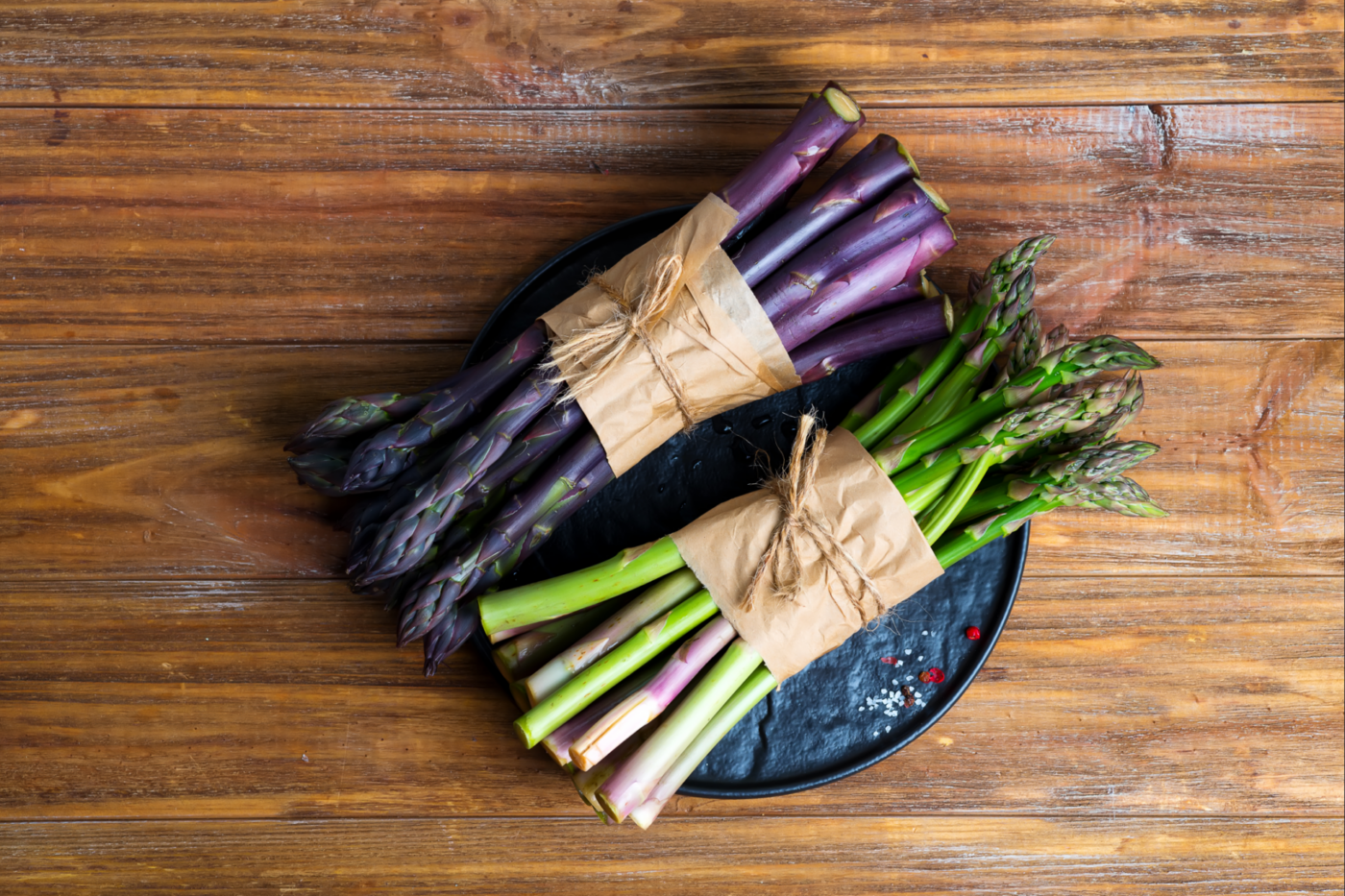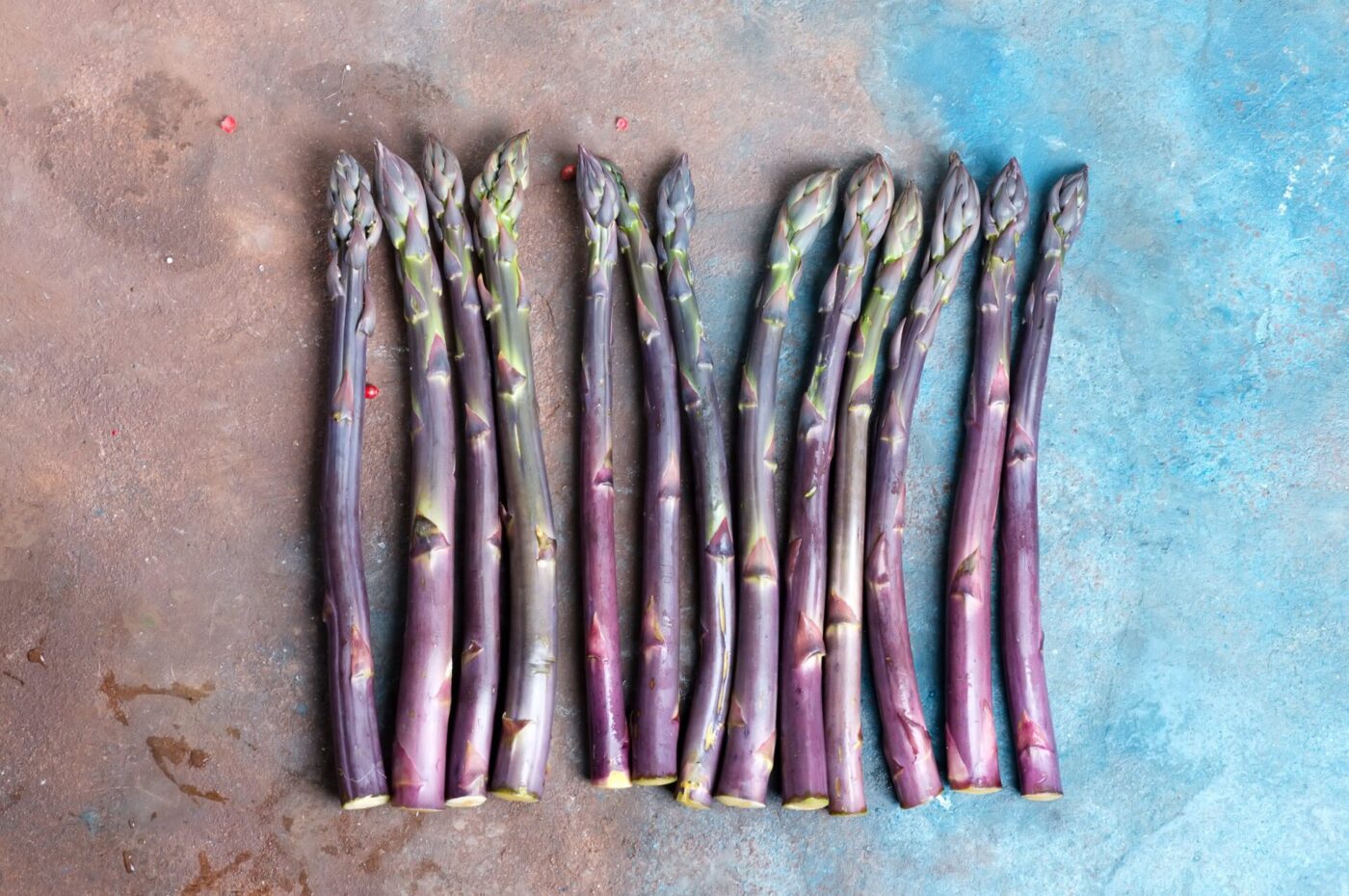More Info: History of Purple Asparagus
The Italian Renaissance of Asparagus: A Cradle of Horticultural Innovation
While green asparagus has been enjoyed since ancient times, with mentions in Egyptian hieroglyphs and Roman writings by Pliny the Elder, the story of purple asparagus begins much later, in the fertile plains of Albenga, Italy. This coastal region, nestled in the Ligurian Riviera, became a hub of horticultural innovation during the Renaissance. The Italian Renaissance, famed for its advancements in art, architecture, and science, also fostered a renewed interest in agriculture and botany. Farmers and landowners experimented with different crops, seeking to improve yields, flavors, and other desirable traits.
It was within this context of agricultural exploration that the seeds of purple asparagus were sown, quite literally. In the mid-20th century, dedicated farmers in Albenga began to selectively breed asparagus plants. Their focus wasn’t solely on color; they were also striving for improved flavor, tenderness, and disease resistance. However, the emergence of a distinct purple hue became a defining characteristic of their work.
The Science of Purple: Unpacking the Role of Anthocyanins
The exact details of how the first purple asparagus came to be are somewhat shrouded in the mists of time, passed down through generations of farmers rather than documented in scientific journals. However, we can understand the process through the lens of plant genetics. The purple color is due to the presence of anthocyanins, water-soluble pigments found in the vacuoles of plant cells. These pigments are responsible for the red, blue, and purple hues found in many fruits and vegetables, such as blueberries, red grapes, and, of course, purple asparagus.
The development of purple asparagus in Albenga was not a case of genetic modification as we understand it today. There were no laboratories or gene-editing tools involved. Instead, it was a testament to the power of natural variation and human ingenuity. Within the population of green asparagus plants, natural mutations likely occurred that resulted in increased anthocyanin production in some individuals. The Albenga farmers, with their keen eyes and generations of accumulated knowledge, recognized these unique plants and began to selectively breed them.
This process involved painstakingly selecting plants with the desired purple coloration and cross-pollinating them, generation after generation. Over time, they were able to isolate and stabilize a strain of asparagus that consistently produced spears with a striking purple hue. This was a slow and meticulous process, relying on careful observation, patience, and a deep understanding of plant reproduction.
A Slow but Steady Spread: From Italian Delicacy to Global Vegetable
The initial cultivation of purple asparagus was largely confined to the Albenga region. It was considered a specialty crop, a delicacy prized for its unique appearance and slightly sweeter, nuttier flavor compared to the more common green variety. Its limited availability and the labor-intensive process required to cultivate it meant that it commanded a higher price in local markets.
During the latter half of the 20th century, word of this intriguing purple vegetable began to spread beyond Italy’s borders. Seeds and crowns (the root system used for planting) were gradually introduced to other parts of Europe, often through the networks of Italian immigrants who carried their culinary traditions with them.
The journey across the Atlantic and to other continents was likely facilitated by researchers and plant breeders who recognized the potential of purple asparagus. By the 1980s and 1990s, purple asparagus was being cultivated in North America, Australia, and New Zealand, albeit on a small scale compared to green asparagus.
The Rise of Purple Varieties: A Spectrum of Flavors and Hues
As purple asparagus gained a foothold in different parts of the world, new varieties began to emerge, each with its own unique characteristics. Plant breeders, building upon the foundation laid by the Albenga farmers, continued to select and cross-breed plants to enhance specific traits. This has led to a diverse range of purple asparagus varieties, including:
- ‘Pacific Purple’: Developed in New Zealand, this variety is known for its high yields, relatively thick spears, and deep purple color that extends further down the stalk than some other varieties. It’s also prized for its particularly sweet flavor and tender texture, making it delicious even when eaten raw. It’s become a popular choice for commercial growers due to its productivity.
- ‘Purple Passion’: A popular variety in the United States, ‘Purple Passion’ boasts a vibrant, almost electric purple hue and a sweet, mild flavor. It’s often considered one of the most visually striking purple asparagus varieties and is a favorite among home gardeners and chefs alike.
- ‘Erasmus’: A Dutch variety known to have male plants only, which results in higher yields than female plants that need to produce seeds and spears. This variety is prized for consistency and quality.
- ‘Guelph Millennium’: While primarily a green variety developed in Canada, it displays purple coloration on the bud scales and has an excellent tolerance to cold. This example show that breeders are still looking at anthocyanins as markers for desirable traits.
Challenges and Triumphs of Cultivation: Mastering the Art of Purple
Growing purple asparagus presents some unique challenges compared to its green counterpart. The very anthocyanins that give the spears their prized color are also sensitive to environmental factors.
- Sunlight Sensitivity: Prolonged exposure to sunlight can cause the purple color to fade, resulting in spears that are more green than purple. This is because UV radiation can degrade anthocyanins.
- Heat Sensitivity: Similarly, overcooking can diminish both the color and the delicate flavor of purple asparagus. High temperatures break down the anthocyanin molecules, leading to a loss of vibrancy.
- Lower Yields: Many purple asparagus varieties are predominantly male plants. While male plants produce more spears per plant than female plants (which also produce berries), the overall yield from a given area can be lower than that of high-yielding green varieties, which often include both male and female plants.
Despite these challenges, dedicated growers around the world have embraced purple asparagus. They employ specific techniques to preserve its color and quality:
- Shading: Some growers use shade cloths or other methods to protect the developing spears from direct sunlight, helping to maintain their deep purple hue.
- Harvesting Timing: Purple asparagus is often harvested at a slightly younger stage than green asparagus to ensure optimal tenderness and prevent the color from fading.
- Rapid Cooling: After harvesting, the spears are quickly cooled to preserve their freshness, flavor, and color.
- Proper Storage: Storing purple asparagus in a cool, humid environment helps to maintain its quality and extend its shelf life.
A Modern Culinary Darling: From Novelty to Mainstream
In recent years, purple asparagus has experienced a significant surge in popularity. Its striking appearance makes it a favorite among chefs who use it to add visual appeal and a touch of elegance to their dishes. Its slightly sweeter flavor profile also makes it a versatile ingredient, suitable for both raw and cooked preparations.
Raw purple asparagus, with its tender texture and nutty flavor, is a delightful addition to salads, crudités platters, and even as a garnish for cocktails. When cooked, it retains its sweetness and adds a unique visual element to stir-fries, pasta dishes, risottos, and more. Quick cooking methods like steaming, grilling, or sautéing are preferred to preserve its color and texture.
The Science of Health: Anthocyanins and Beyond
Beyond its culinary appeal, the nutritional benefits of purple asparagus have also contributed to its rising star. The high concentration of anthocyanins, those potent antioxidants, has positioned it as a “superfood” in the eyes of many health-conscious consumers.
Scientific research into the health benefits of anthocyanins is ongoing, but early studies have yielded promising results. Anthocyanins have been linked to:
- Reduced Inflammation: Chronic inflammation is a contributing factor to many diseases, and anthocyanins have demonstrated anti-inflammatory properties in various studies.
- Cardiovascular Protection: Some research suggests that anthocyanins may improve blood vessel function, lower blood pressure, and reduce the risk of heart disease.
- Potential Anti-Cancer Effects: While more research is needed, some studies have shown that anthocyanins may inhibit the growth of cancer cells and induce apoptosis (programmed cell death) in certain types of cancer.
- Brain Health: Anthocyanins may have neuroprotective effects, potentially helping to protect brain cells from damage and improve cognitive function.
The Future is Purple: A Continued Renaissance
The history of purple asparagus is a testament to the power of human curiosity, dedication, and the enduring appeal of unique and flavorful foods. From its humble beginnings as a regional specialty in the fields of Albenga to its current status as a sought-after ingredient in kitchens around the globe, purple asparagus has carved a distinct niche for itself in the culinary world.
As consumer interest in diverse and nutritious vegetables continues to grow, the future of purple asparagus looks exceptionally bright. Ongoing research into its health benefits, coupled with the development of new and improved varieties, will likely further solidify its place on our plates. The story of purple asparagus is far from over, and it will be fascinating to see how this regal vegetable continues to evolve, captivate palates, and contribute to a healthier and more flavorful future. It’s a story that reminds us that even in the familiar world of vegetables, there are still new discoveries to be made and delicious surprises waiting to be unearthed.




Comments